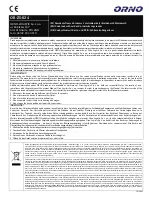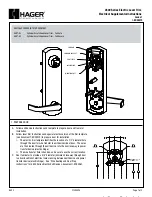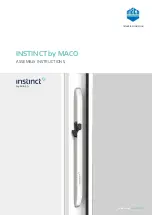
13
Enter the programming mode
* Main code #
Wiegand input bit
8 26~44 # for EM cards the default setting is 26 bits
Disable parity bit
8
0
#
Enable parity bit
8
1
# default settings
Exit the programming mode
*
Important: Programming - see Quick Programming Guide (p.2)!
Users can be added on both the device and an external reader.
Connecting an external keypad to the device
The external keypad can have 4-bit, 8-bit or 10-bit output format. Adjust the appropriate format to suit your device.
Enter the programming mode
* Main code #
PIN output bits
8 4 or 8 or 10 # default setting is 4 bits
Exit the programming mode
*
Important: Users can be added both on the device and on an external keyboard.
The device works as a Wiegand reader
In this mode of operation, the device works as a Wiegand (26 bit) output and gives the possibility to transfer data by connecting wires to any controller that has
a Wiegand (26 bit) input.
Important: By selecting the operating mode - Wiegand reader, all previous settings (Controller operating mode) will be lost. Connect the brown and yellow wires as
follows:
- Brown - Green LED,
- Yellow - Buzzer.
Wiegand settings
Enter the programming mode
* Main code #
Wiegand input bit
8 26~44 # for EM cards the default setting is 26 bits
PIN output bits
8 4 lub 8 lub 10 # default setting is 4 bits
Disable parity bit
8
0
#
Enable parity bit
8
1
# default settings
Advanced application
Note: Only connecting devices of the same series together guarantees their correct operation. The Main code on the "main" device must be the same as on the
secondary device. Start the user transfer function on the main device (transfer of the full memory of 900 users takes approx. 30 seconds).
Users transferring (Main device)
Enter the programming mode
* Main code #
Start data transfer to secondary device
9
8
#
Within 30 seconds the LED will turn green, you will hear a beep and the LED will turn red,
indicating that the operation is correct
Exit the programming mode
*






































